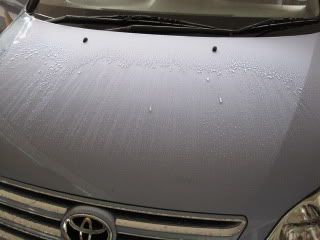 When a car is sent for grooming, a LSP will be applied over the final prepared surfaces and this will become the protective cum sacrificial layer. So when the rain comes, the treated surface which is hydrophobic, will repel the water and water beads are form on the surfaces. Is this water beading proprieties all good for the paint surfaces?
When a car is sent for grooming, a LSP will be applied over the final prepared surfaces and this will become the protective cum sacrificial layer. So when the rain comes, the treated surface which is hydrophobic, will repel the water and water beads are form on the surfaces. Is this water beading proprieties all good for the paint surfaces?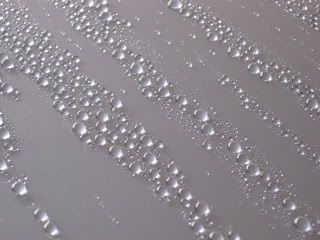 These are 4 different LSPs shown here, as you may notice in the 1st (above) and 2nd (below)pictures, the LSPs are strong and the water is beading nicely.
These are 4 different LSPs shown here, as you may notice in the 1st (above) and 2nd (below)pictures, the LSPs are strong and the water is beading nicely.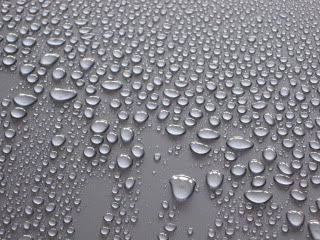
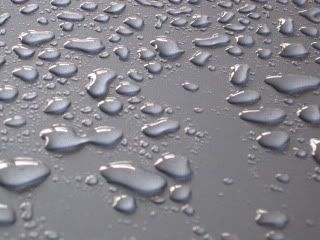 This is the next set of 2 pictures, the LSPs are not as fantastic as the first 2 pictures (above top).
This is the next set of 2 pictures, the LSPs are not as fantastic as the first 2 pictures (above top).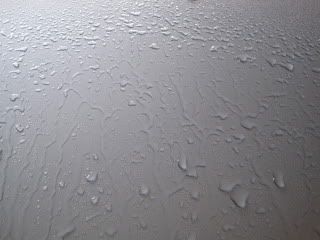 After the rainfall, these water beads will stay on most flat/ near flat surfaces. Hence when the sun comes out, these water beads will be heated up and dried up. It will induce certain level of etching over the LSP/ surfaces and in the situation whereby there is no sun after the rain, the water will eventually dry up and become spotting issue on the surfaces. Protected by the LSP, how can we minimise the risk of water etch marks forming on the flat surfaces after the rain? These are my humble opinions, feel free to add on.
After the rainfall, these water beads will stay on most flat/ near flat surfaces. Hence when the sun comes out, these water beads will be heated up and dried up. It will induce certain level of etching over the LSP/ surfaces and in the situation whereby there is no sun after the rain, the water will eventually dry up and become spotting issue on the surfaces. Protected by the LSP, how can we minimise the risk of water etch marks forming on the flat surfaces after the rain? These are my humble opinions, feel free to add on.1. Take your ride for a spin. When you drive at speed above 70km/h, more than 60% of the water beads will roll off the car. The faster the speed, the quicker the water beads will roll off. (Soiled surfaces will hinder/ obstruct water movement.)
2. Use an electric blower to blow away the water beads. This will probably remove about 80% of the water beads.
3. Wash the car and dry it, this method is 100% water removal. Do not attempt to dry the wet surface of a car especially one that has been driven around as the fine particles on the surface will definitely mar the paintwork during the wipe down. You solve one issue but created another issue (surface marring.)
If the paint surfaces are not hydrophobic in the start state, option 1 & 2 will be out. You can only use option 3. Do you have any other ways to minimise water etch mark? If you don't want water etching problem on the paint work, eliminate water/ sun from the equation... Possible? Cars that are park in shelter carpark definitely have the advantage over those that are park in the open. Thanks for viewing.
No comments:
Post a Comment